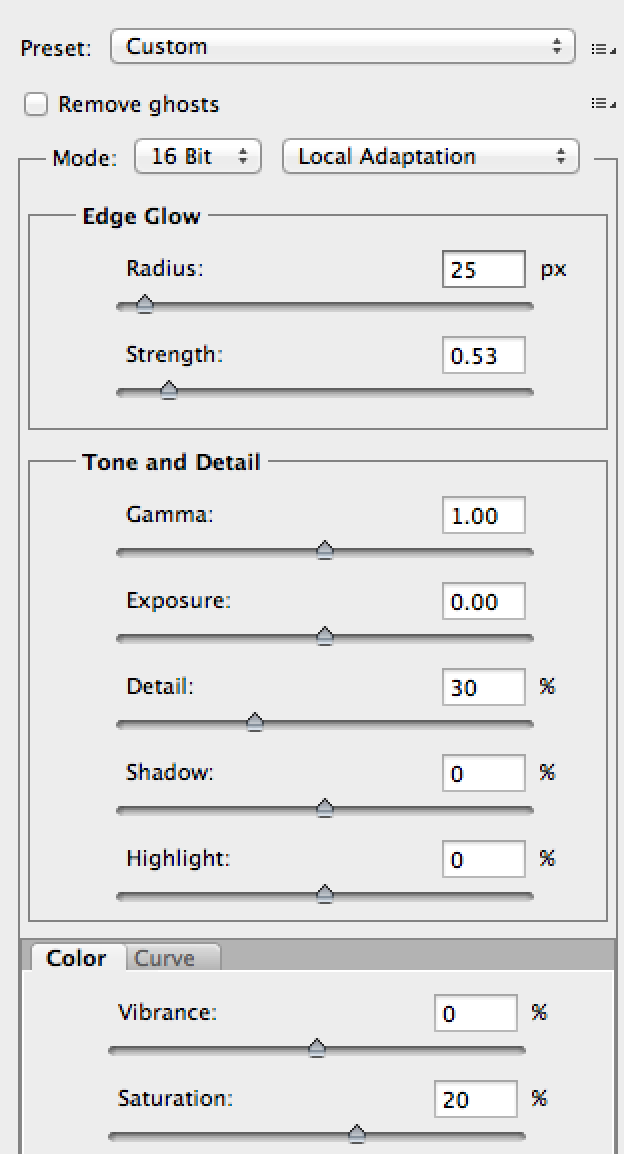
You can make small changes to the amount of deghosting, choose which source file to use as your base image, and select specific areas for selected deghosting of a problem area.įigure 6: These photos were reprocessed with higher levels of ghost removal compared to Figures 1 and 2.

#DEGHOSTING IN PTGUI PRO PRO#
Deghosting in Photomatix Pro is much more powerful. The preview increases in size with higher Deghost Amount settings. When Show Deghost Overlay is selected, a red mask overlay shows on the image to indicate where ghost removal will occur, as shown in Figure 4. You have four choices: none, low, medium, and high.
#DEGHOSTING IN PTGUI PRO SOFTWARE#
All HDR software has some sort of ghost removal to help manage this problem. If something in the scene is moving, such as headlights on the bridge, water, and clouds, they can create ghosts in the final image. Ghosting is a common problem when merging multiple source photos into a single HDR image. More noise removal in Lightroom would help to manage noise in the Photomatix Pro image, though it isn’t too bad considering this is a 1:1 magnification. (Both files received +15 Luminance noise removal in Lightroom’s Detail panel.) The additional noise is most likely due to the sharper file and the lighter shadow areas. The Photomatix Pro HDR on the right shows more noise than the Lightroom HDR on the left.


This option isn’t possible when merging HDR in Lightroom. I should mention that I applied a generous amount of Local Contrast in Photomatix Pro to get the look I like, which is sharp and crips. Additional sharpening can be applied to improve the sharpness of the Lightroom image, but it would be difficult to get it to match the Photomatix Pro sharpness. The Lightroom HDR on the left isn’t nearly as sharp as the Photomatix Pro file on the right. Lightroom HDR on left, Photomatix Pro HDR on Right.īoth versions shown above received the same level of sharpening for this comparison (+25, 1.0 25, 0 in the Detail panel). In both cases my goal was to make each image look as good as I could after the merge.įigure 3: Detailed comparison at 1:1 magnification. Both merged files were processed further in Lightroom using the Basic panel, Detail panel, and gradients at the top and bottom of each image. Both sets of images had medium deghosting applied during the HDR process. The second image is the same set of files merged in Photomatix Pro’s Exposure Fusion Natural. The first image is the result of merging the three source files (2-,0,+2 EV) in Lightroom.
#DEGHOSTING IN PTGUI PRO SERIES#
Below are two images merged from a three-photo HDR series I shot during blue hour last night in downtown Portland. I decided to do a test to compare Lightroom’s HDR feature to Photomatix Pro, my go-to HDR program. If Lightroom could become my go-to HDR merging solution, it would save me time and streamline my postproduction workflow. But to make that magic I need a high quality merged HDR file.

This last part of the process is where the magic often happens. Finally I import the merged file into Lightroom for fine-tuning. Then I merge those photos using Lightroom’s plugin for Photomatix Pro to create an HDR file. I use it to prepare source photos with a few basic settings, such as white balance and basic lens corrections. Even though I use Photomatix Pro for my HDR, Lightroom is a big part of my HDR process. As someone who shoots HDR regularly and uses Lightroom for the majority of his workflow, I like the idea of having HDR built directly into Lightroom. In the past it has been necessary to use Photoshop or HDR plug-ins like Photomatix Pro or Nik HDR Pro. The latest versions of Lightroom (Lightroom CC and Lightroom 6) have a new feature for merging HDR files within Lightroom.


 0 kommentar(er)
0 kommentar(er)
